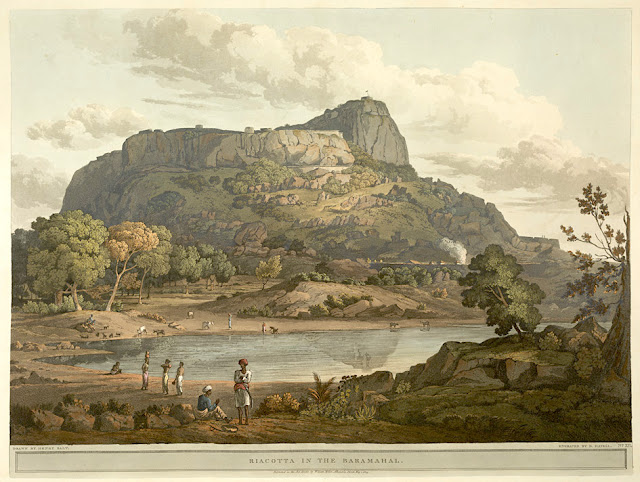Naanu-i-Cake (no elevation data)
Fiji
In "Nananu, Fiji ", watercolor 28.5 x 42 cm
The volcano
Naanu-i-Cake
(no elevation data) is a volcanic island in Fiji less than one
kilometer off the coast of the main island of Viti Levu, near the
Rakiraki-district in Ra Province. Nananu-i-Cake is located immediately
next to the island of Nananu-i-Ra. Nananu-i-Cake and Mabua (the islet
located immediately to the southeast) islands are about 600 acres
(242.81 hectares) in area. The main residence on the island was designed
by the architecture firm of Murray Cockburn, based in Auckland. A
deep-water jetty is on the island's western shore. In 1974, Sir Harold
Mitchell visited Fiji from the UK and purchased Nananu-i-Cake and Mabua
as a retreat. Because of Harold's position of Vice-Chairman of the
Conservative Party under Sir Winston Churchill and his social and
political standing, several high-profile dignitaries visited and stayed
on the island. Commemorative trees were planted for many of these
high-profile visits. Nananu-i-Cake has remained in Sir Harold Mitchell's
family since 1974. Nananu-i-Cake also retains evidence of moka, stone
formations built in tidal areas to trap fish at low tide, and ring-wall
fortifications built with volcanic rocks. As of 2012, the entire island
is tentatively available for sale as a private island, for an estimated
equivalent of around $8-8.5 million USD. In early 2022 the island
received renewed attention on social media as self-proclaimed
crypto-enthustiasts Max Olivier and Helena López Jurado announced plans
to purchase the Nananu-i-Cake and build a private resort aimed at other
crypto-enthusiasts using money raised from selling NFTs tied to property
on the island to prospective residents.
The painter
Constance Frederica “Eka” Gordon-Cumming was
a noted Scottish travel writer and painter. Born in a wealthy family,
she travelled around the world and painted described scenes and life as
she saw them.
Constance Gordon-Cumming was a prolific landscape
painter, mostly in Asia and the Pacific. She painted over a thousand
watercolors and worked with a motto to ‘never a day without at least one
careful-coloured sketch’ starting her day at 5 am while in India.
Places she visited include Australia, New Zealand, America, China, and
Japan.
She arrived in Hilo, Hawaii in October 1879, and was among
the first artists to paint the active volcanoes. Her Hawaii travelogue,
Fire Fountains: The Kingdom of Hawaii, was published in Edinburgh in
1883. She had several dangerous moments but her travel ended in 1880
when the Montana that she was on ran into rocks at Holyhead. While most
of the passengers took the lifeboat, she stayed on last along with the
captain to save her paintings and was rescued many hours later. She
returned to live at Crieff with her widowed sister Eleanor and continued
to write books.
Her best known books are At Home in Fiji and A
Lady's Cruise on a French Man-of-War. The latter book resulted from an
invitation to join a French ship put into service for the Bishop of
Samoa so that he could visit remote parts of his far-flung diocese.
Miss Gordon-Cumming received much criticism from male writers of the
era, perhaps because she did not fit in the traditional Victorian role
of women, as she often traveled alone and unaided.
In any case, her landscape drawings and watercolors seem to be universally admired.
___________________________________________
2022 - Wandering Vertexes...
by Francis Rousseau
%20-Nananu,-fiji-%20watercolor%20%2028.5%20x%2042%20cm.jpg)











